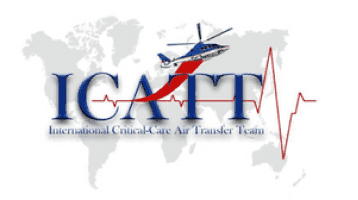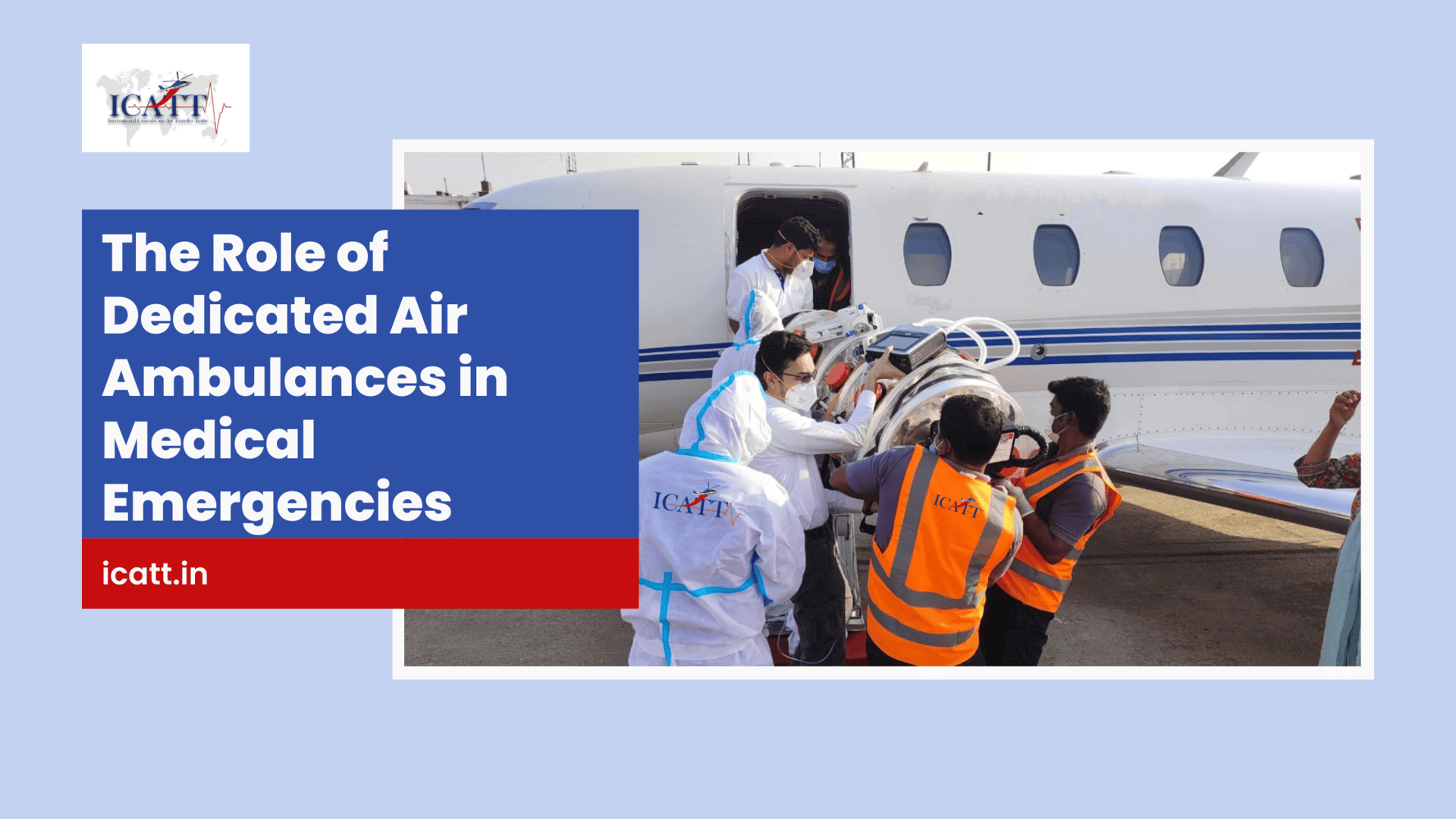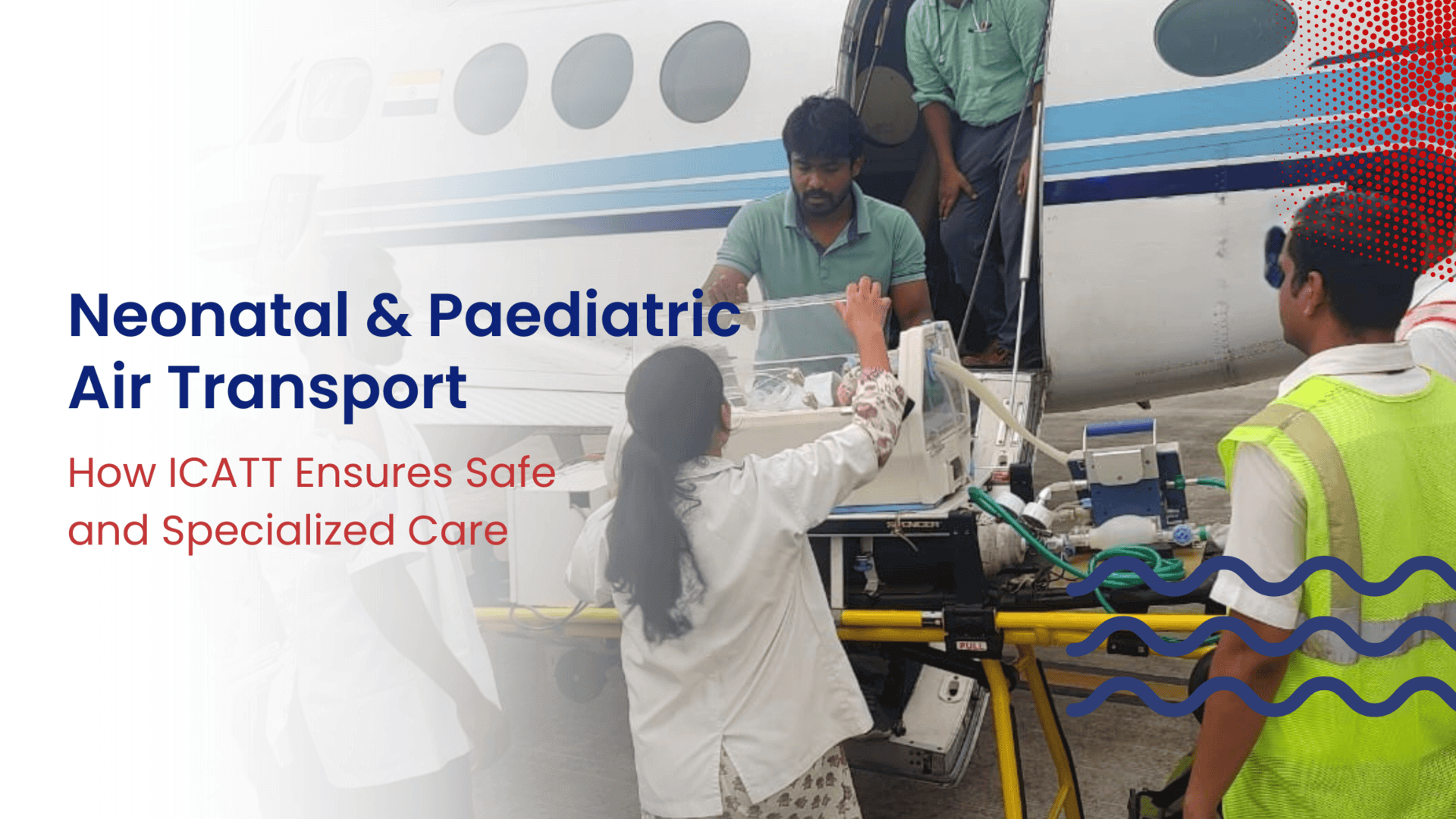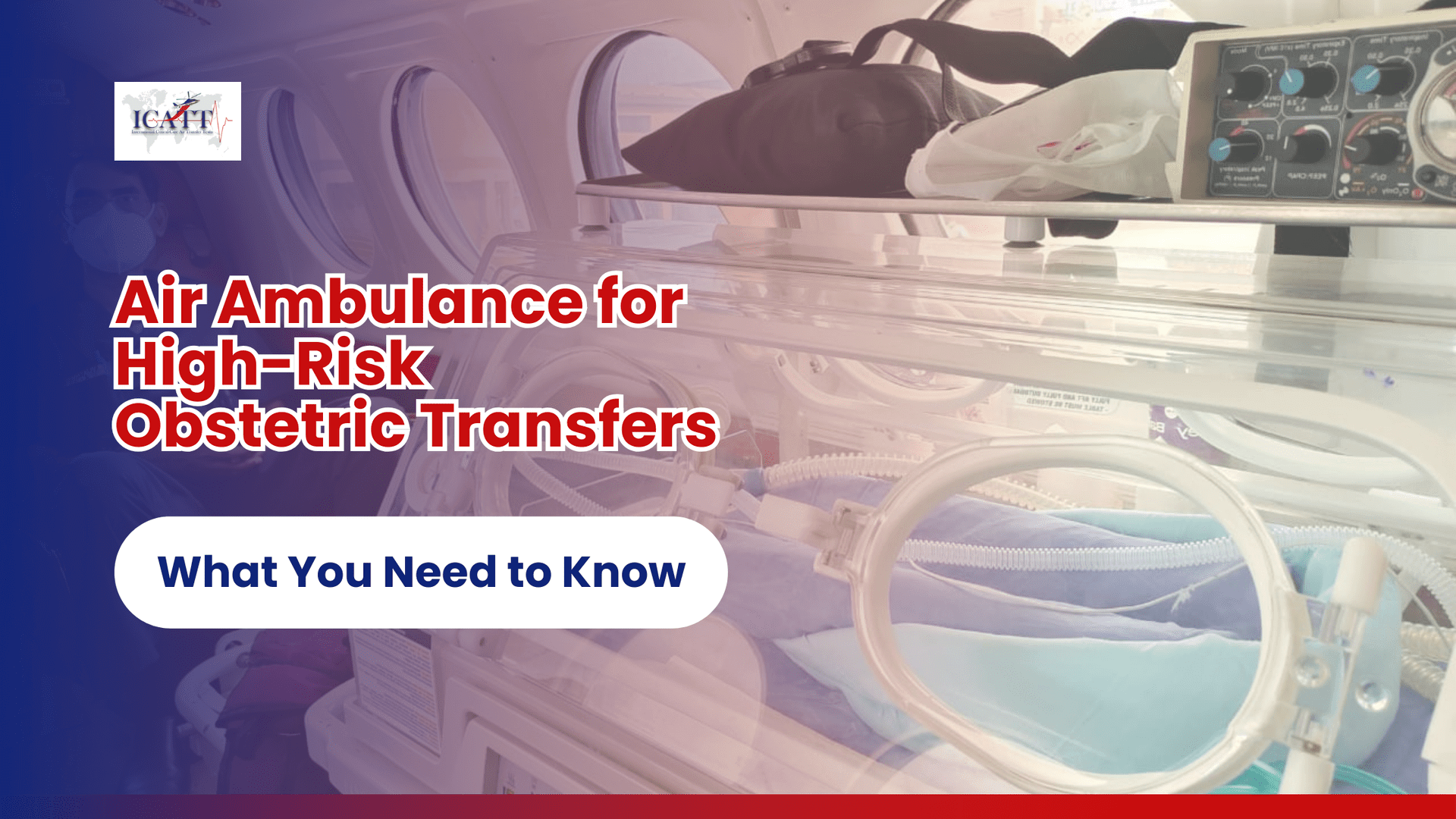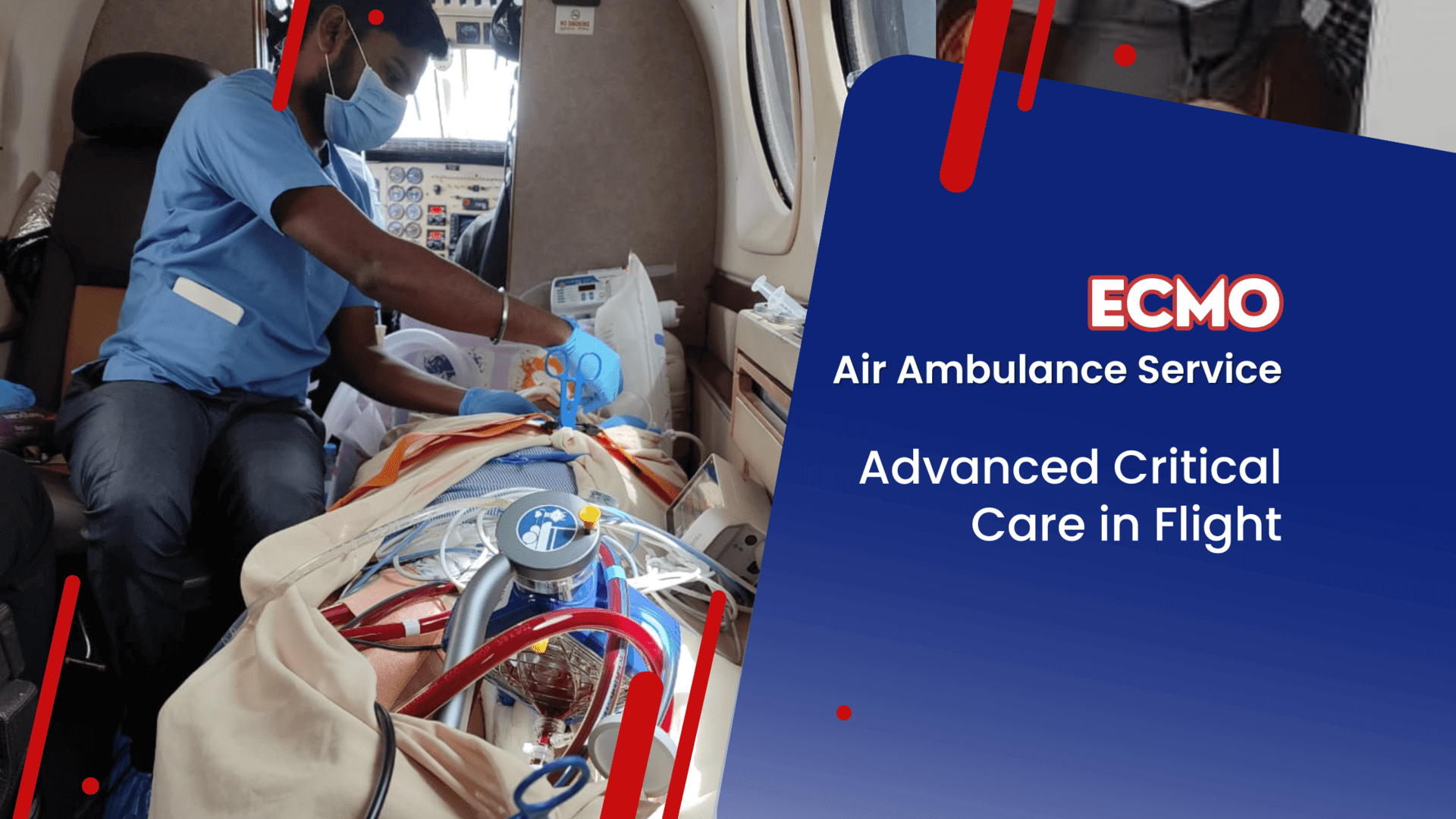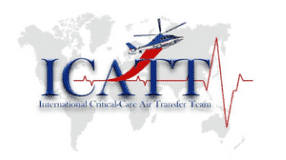Air ambulance is the fastest way to transport critically ill patients from one hospital to another. ICATT air ambulances offer a variety of aircraft options to meet individual needs and budget considerations. The aircraft is the most advanced life support equipment to meet the intensive care needs of patients. Each aircraft undergoes regular inspections and uses the most advanced medical equipment.
ICATT air ambulance provides caring, compassionate and cost-effective medical transportation services. Our medical transportation options are based on the patient’s condition, the urgency of travel, finances, domestic or international travel. Our well-trained team follows strict medical transportation procedures and protocols.
Let’s address some of the most common questions related to extracorporeal membrane oxygenation support – ECMO.
What is ECMO?
Extracorporeal membrane oxygenation, also known as ECMO, is an extracorporeal technique that can provide long-term cardiac and respiratory support for people whose heart and lungs cannot provide sufficient gas exchange or perfusion to sustain life.

How does ECMO Work?
Blood is taken out of the patient’s body through a cannula and guided by a pump and oxygenator to effectively remove carbon dioxide and oxygenate the blood. The blood is then returned to the patient through the same cannula or a separate cannula at a flow rate of up to 7 litres per minute. ECMO minimizes or eliminates the need for ventilators and cardiovascular support, allowing organs to rest and recover. If ECMO is not used, extreme conditions of the patient, such as excessive ventilator settings, inotropic drugs, and vasopressors, may cause continuous organ damage and further damage.
Who needs an ECMO air ambulance?
ECMO is short-term life support for patients with cardiopulmonary failure or both. Considering the advancement of ECMO technology, it is a machine that can replace the cardiopulmonary function of patients with the most critical conditions.
ECMO air ambulance is used in heart diseases under the following conditions:
- Heart attack (acute myocardial infarction)
- Myocardial disease (decompensated cardiomyopathy)
- Myocardial inflammation (myocarditis)
- A life-threatening response to infection (septicemia)
- Hypothermia (severe hypothermia)
ECMO air ambulance is used in lungs diseases under the below conditions:
- Pulmonary disease syndrome (ARDS),
- Respiratory failure
- Pulmonary artery obstruction (pulmonary embolism)
- Coronavirus disease (COVID-19),
- Diaphragm defect (congenital diaphragmatic hernia),
- Flu, Pneumonia, lung syndrome caused by Hantavirus
- Symptoms of hypertension lung (pulmonary hypertension)
What is the ECMO survival rate?
It improves the survival rate of many critically ill patients, especially when they do not respond to life support. ICATT Air ambulances in India are the best choice to transport them from one place to another. The survival rate of air transport patients with ECMO is 95%-98%.
What do air ambulances do with ECMO?

The ICATT Air Ambulance Service ECMO medical team consists of the chief anesthesiologist, perfusion specialist and auxiliary surgeons. The process of initiating and changing ECMO includes:
- Evaluation of the patient
- Discussion with the doctor in charge of treatment
- Discussion with the doctor in charge of receiving
- Preparation of the patient for ECMO activation
- Surgeon initiating ECMO for the patient
- Stabilizing the patient during the air ambulance flight
- Transport patients in the destination hospital
- Transfer from bed to bed
What are the different types of ECMO?
VA and VV are the two types of ECMO. VA or venous, arterial ECMO supports the cardiopulmonary function. It is done using two cannulas. VV or vein-venous ECMO supports lung function. VV ECMO can be performed with one or two cannulas.
VA ECMO has two cannulas, one in the vein and one in the artery. The blood drains from the veins and returns to the arteries. Both cannulas are usually placed in the neck. Shortly after the operation, patients who need ECMO will have a cannula placed at the chest incision without sutures and covered with a special bandage to prevent infection.
For VV ECMO, one or two cannulas can be used. If a cannula is used, it has a double cavity; i.e., it has the two tubes combined into one. It is usually put into a large vein in the patient’s neck. The blood flows out from one side of the cannula and returns through the other side. If two cannulas are used, blood will leave one cannula placed in one vein and return through a second cannula placed in a different vein.
Does ECMO hurt?
Generally not. Patients receiving ECMO have usually been connected to a ventilator through the mouth or nose through a breathing tube and given pain relievers and sedatives. When they are first connected to the machine, they are sedated and cannot feel the tube entering their veins and arteries. Some heart and lung monitoring equipment are connected to the patient to monitor heart rate, respiratory rate, blood pressure and oxygen levels. Some drugs can make patients drowsy in the machine, but some patients can interact with doctors and relatives while receiving ECMO. Because they are connected to the pipeline, the patient needs the careful help of medical staff when moving.
Who will take care of my ECMO?
Several doctors may be involved in your care. The intensive care physician is primarily responsible for all patients in the ICU. A cardiothoracic surgeon will take care of a patient, and a paediatric surgeon will take care of all children. Specially trained nurses, and ECMO experts, manage the ECMO circuit. The ECMO specialist can be a nurse or a respiratory therapist. Other people involved in caring for each patient include social workers, pharmacists, nutritionists, and child development specialists.
How long do people stay on ECMO?
Normally, the ECMO machine only supports the patient for a few hours or a few days, but it may take several weeks of support, depending on the severity of the condition and its progression over time. Doctors will always try to get people out of ECMO as soon as possible. Some diseases and minor ailments can be treated quickly, while others cannot. Unfortunately, ECMO cannot save everyone, but it has greatly improved the survival of thousands of critically ill patients who did not respond to typical life-saving treatments in hospitals.
What are the main risks of ECMO?
The main problem with ECMO is bleeding. Therefore, the patient’s blood is often tested to ensure that it is dilute enough. The medical team uses the test results to understand how the ECMO machine is helping the patient and quickly change their treatment if necessary.
Conclusion:
ICATT Air Ambulance has a professional medical team that can help patients transition from ECMO to Air Ambulance services. We have a quick response team and case manager who can take immediate action 24 hours a day, seven days a week. ICATT air ambulance is always ready for emergency calls, and we provide the best ECMO air ambulance service at a very reasonable cost. ICATT air ambulance is the best air ambulance in India; you can talk to us at +91-9701111156.
